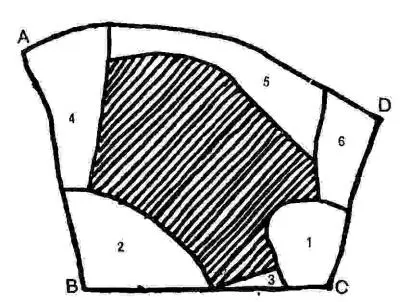Christopher Whall - Stained Glass Work - A text-book for students and workers in glass
Здесь есть возможность читать онлайн «Christopher Whall - Stained Glass Work - A text-book for students and workers in glass» — ознакомительный отрывок электронной книги совершенно бесплатно, а после прочтения отрывка купить полную версию. В некоторых случаях можно слушать аудио, скачать через торрент в формате fb2 и присутствует краткое содержание. Жанр: foreign_antique, foreign_home, visual_arts, на английском языке. Описание произведения, (предисловие) а так же отзывы посетителей доступны на портале библиотеки ЛибКат.
- Название:Stained Glass Work: A text-book for students and workers in glass
- Автор:
- Жанр:
- Год:неизвестен
- ISBN:нет данных
- Рейтинг книги:3 / 5. Голосов: 1
-
Избранное:Добавить в избранное
- Отзывы:
-
Ваша оценка:
- 60
- 1
- 2
- 3
- 4
- 5
Stained Glass Work: A text-book for students and workers in glass: краткое содержание, описание и аннотация
Предлагаем к чтению аннотацию, описание, краткое содержание или предисловие (зависит от того, что написал сам автор книги «Stained Glass Work: A text-book for students and workers in glass»). Если вы не нашли необходимую информацию о книге — напишите в комментариях, мы постараемся отыскать её.
Stained Glass Work: A text-book for students and workers in glass — читать онлайн ознакомительный отрывок
Ниже представлен текст книги, разбитый по страницам. Система сохранения места последней прочитанной страницы, позволяет с удобством читать онлайн бесплатно книгу «Stained Glass Work: A text-book for students and workers in glass», без необходимости каждый раз заново искать на чём Вы остановились. Поставьте закладку, и сможете в любой момент перейти на страницу, на которой закончили чтение.
Интервал:
Закладка:
Now, further, you must understand that you must not cut round all the sides of a shaped piece of glass at once; indeed, you must only cut one side at a time, and draw your cut right up to the edge of the glass, and break away the whole piece which contains the side you are cutting before you go on to another.
Thus, in fig. 16, suppose the shaded portion to be the shape that you wish to cut out of the piece of glass, A, B, C, D. You must lay your gauge anglewise down upon the piece. Do not try to get the sides parallel to the shapes of your gauge, for that makes it much more difficult; angular pieces break off the easiest.

Fig. 16.
Now, then, cut the most difficult piece first . That marked 1. Perhaps you will not cut it quite true; but, if not, then shift the gauge slightly on to another part of the curve, and very likely it may fit that better and so come true.
Then follow with one of those marked 2 or 3. Probably it would be safest to cut the larger and more difficult piece first, and get both the curved cuts right by your gauge; then you can be quite sure of getting the very easy small bit off quite truly, to fit into its place with both of them. Go on with 4, and then with one of those marked 5 or 6. Probably it would still be best to cut the curved piece first, unless you think that shortening it by cutting off the small corner-piece first will make the curved cut easier by making it shorter.
In any case you must only cut one side at a time, and break it away before you make the cut for another side.
Take care that you do not go back in your cut. You must try and make it quite continuous onwards; for if you go back in the cut, where your tool has already thrown up splinters, it will spoil your tool and spoil your cut also.
Difficult curves, that it is only just possible to get out by groseing, ought never to be resorted to, except for some very sufficient reason. A cartoonist who knows the craft will avoid setting such tasks to the cutter; but, unfortunately, many cartoonists do not know the craft. If people were taught the complete craft as they should be, this book would not have been written.
Here let me say that we cannot possibly within the narrow limits of it go thoroughly into all the very wide range of subjects connected with glass—the chemistry, the permanence, the purity of materials. With the exception of the practice of the craft, probably we shall not be able to go thoroughly into any one of them; but I shall endeavour to mention them all, and to do so sufficiently to indicate the directions in which work and research and experiment may be made, for they are all three much needed in several directions.
It becomes, for instance, now my task, in modifying the passage some pages back as I promised, to go into one of these subjects in the light of inquiries made since the passage in question was written; and I let it for the time being stand just as it was, without the additional information, because it gives a picture of how such things crop up and of the way in which such investigations may be made, and of how useful and pleasant they may be.
Here then let us have—
Through the agent for the wheel-cutter in England I communicated with the maker and inventor in America, and told him of our difficulties and perplexities over here, and chiefly with regard to two points. First, the awkwardness of the handle, which causes the glaziers here to use the tool bound round with wadding, or enclosed in a bit of india-rubber pipe; and, secondly, the bluntness of the "jaws" which hold the wheel, and which must be ground down (and are in universal practice ground down), before the tool can be sharpened.
His reply called attention to a number of different patterns of handle, the existence of which, I think, is not generally known, in England at any rate, and some of which seem to more or less meet the difficulties we experience, most of them also being made with malleable iron handles, so that fresh cutting-wheels can be inserted in the same handle. His letter also entered into the question of the actual dynamics of "cutting," maintaining, I think rightly, that a "cut" is made by the edge of the wheel (this not being very sharp) forcing the particles of the glass down into the mass of it by pressure.
With regard to the old-fashioned pattern of tool which we chiefly use in this country, the very sufficient explanation is that they continue to make it because we continue to demand it, a circumstance which, as he declares, is a mystery to the inventor himself! Nevertheless, as we do so, and, in spite of the variety of newer tools on the market, still go on grinding down the jaws of our favourite, and wrapping round the handle with cotton-wool, let us try and put this matter straight, and compare our requirements with the advantages offered us.
There are three chief points to be cleared up. (1) The actual nature of a "cut" in glass; (2) the question of sharpening the tool and grinding down of the jaws to do so; and (3) the "mystery" of our preference for a particular tool, although we all confess its awkwardness by the means we take to modify it.
(1) With regard, then, to the nature of a "cut" in glass I am disposed entirely to agree with the theory put forward by the inventor of the wheel, which an examination of the cuts under the microscope, or even a 6 diameter lens, certainly also tends to confirm.
What happens appears to my non-scientific eyes to be this.
Glass is one of the most fissile or "splittable" of all materials; but it is so just in the same way that ice is, and just in the opposite way to that in which slate or talc is.
Slate or talc splits easily into thin layers or laminæ, because it already lies in such layers , and these will come apart when the force is applied between them: but it will only split into the laminæ of which it already is composed, and along the line of the fissures which already exist between them .
Glass, on the contrary (and the same is true of ice, or for that matter of currant-jelly and such like things), appears to be a substance which is the same in all directions, or nearly so, and therefore as liable to split in one direction as in another, and is so loosely held together that, once a splitting force is applied, the crack spreads very rapidly and easily, and therefore smoothly and in straight lines and in even planes.
The diamond, or the wheel-cutter, is such a force. Being pressed on to the surface, it forces down the particles, and these start a series of small vertical splits, sometimes nearly through the whole thickness of the glass, though invisibly so until the glass is separated. And mark, that it is the starting of the splits that is the important thing; there is no object in making them deep , it is only wasted force; they will continue to split of themselves if encouraged in the proper way (see Plates IX. Конец ознакомительного фрагмента. Текст предоставлен ООО «ЛитРес». Прочитайте эту книгу целиком, купив полную легальную версию на ЛитРес. Безопасно оплатить книгу можно банковской картой Visa, MasterCard, Maestro, со счета мобильного телефона, с платежного терминала, в салоне МТС или Связной, через PayPal, WebMoney, Яндекс.Деньги, QIWI Кошелек, бонусными картами или другим удобным Вам способом.
and X. Конец ознакомительного фрагмента. Текст предоставлен ООО «ЛитРес». Прочитайте эту книгу целиком, купив полную легальную версию на ЛитРес. Безопасно оплатить книгу можно банковской картой Visa, MasterCard, Maestro, со счета мобильного телефона, с платежного терминала, в салоне МТС или Связной, через PayPal, WebMoney, Яндекс.Деньги, QIWI Кошелек, бонусными картами или другим удобным Вам способом.
). Try this as follows.
Интервал:
Закладка:
Похожие книги на «Stained Glass Work: A text-book for students and workers in glass»
Представляем Вашему вниманию похожие книги на «Stained Glass Work: A text-book for students and workers in glass» списком для выбора. Мы отобрали схожую по названию и смыслу литературу в надежде предоставить читателям больше вариантов отыскать новые, интересные, ещё непрочитанные произведения.
Обсуждение, отзывы о книге «Stained Glass Work: A text-book for students and workers in glass» и просто собственные мнения читателей. Оставьте ваши комментарии, напишите, что Вы думаете о произведении, его смысле или главных героях. Укажите что конкретно понравилось, а что нет, и почему Вы так считаете.












